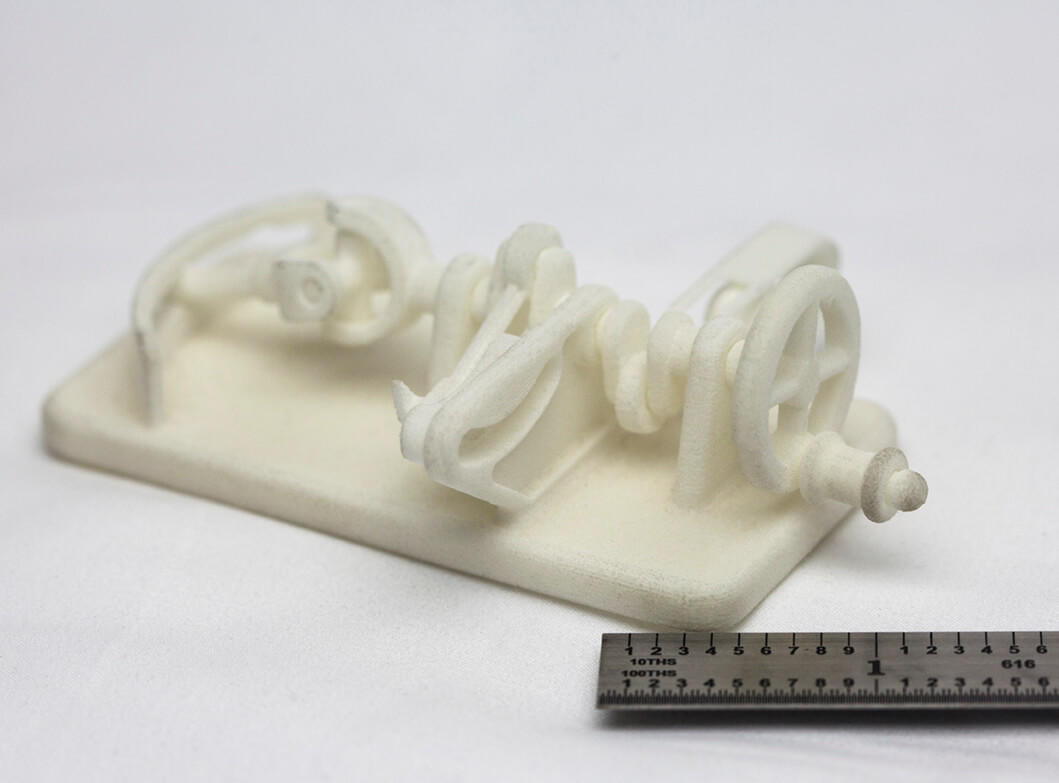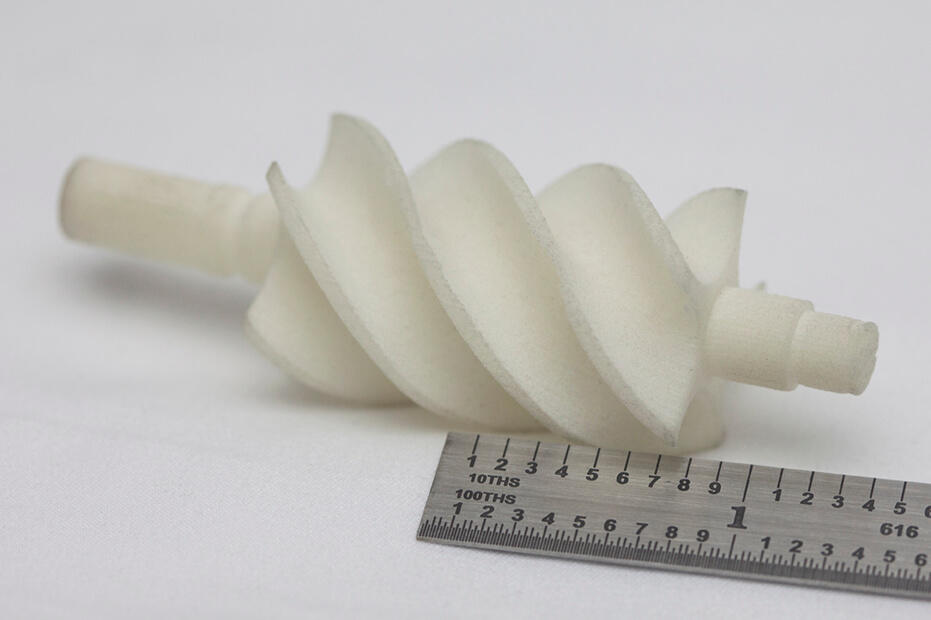Selective Laser Sintering (SLS) 3D PRINTING PROVIDES:
- High dimensional accuracy and intricate details
- Smooth surface finish
- Good uniform strength in all directions
- Variety of dyeable, white nylon materials
APPLICATIONS:
- Functional testing
- Jigs and fixtures
- Small-batch production
- Bellows and gaskets
- Snap-fit and interlocking assemblies
- Autoclavable medical use
- Scenarios where HP Multi Jet Fusion parts are too dark
Selective Laser Sintering (SLS) uses thermal energy from a laser to bind cross-sections of polymer powder one layer at a time. Once the entire cross-section is scanned, the build platform moves down one layer and the process repeats. The result is a bin filled with parts surrounded by unsintered powder. When printing is complete, the parts are removed and the unsintered powder is recycled and reused in the machine for future builds. Support structures are not required for overhangs and undercuts as the powder from each previous layer acts as the support.
Like HP Multi Jet Fusion 3D printing, SLS produces strong end-use parts and functional prototypes with outstanding resolution, surface finish, and edge definition. Finishing and post-processing steps, like dyeing or surface smoothing, can then be employed to improve visual appearance.
SLS Specifications
BUILD VOLUME: 660 x 350 x 553 mm (26 x 13.8 x 21.8 in)
MATERIAL DATA SHEETS:
3D Systems: DuraForm PA (Nylon 12) | DuraForm EX (Nylon 11) | DuraForm ProX | DuraForm GF (Glass Filled Nylon)
EOS: PA 2200 (PA12) | PA 3200 (PA12-GB)
SLS DESIGN GUIDELINES: View Here



